Understanding Memory Disruption in Traumatic Brain Injury
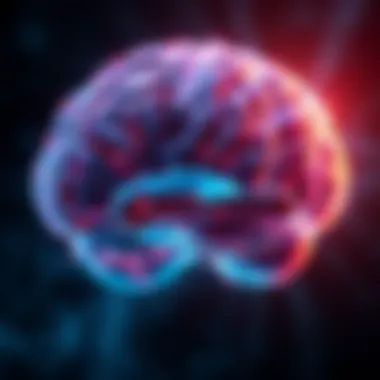
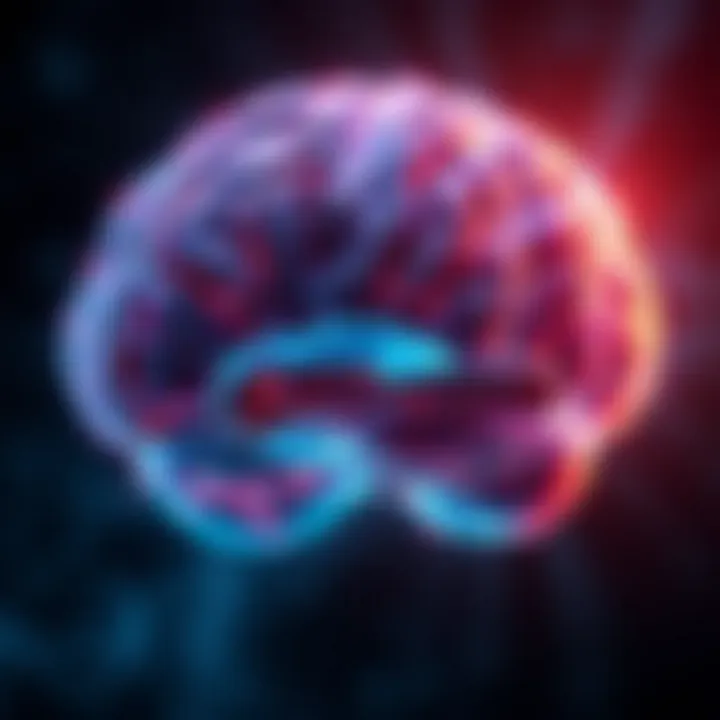
Intro
Memory is a fascinating aspect of our cognitive function, acting as the storehouse of experiences, knowledge, and skills. Yet, this intricate system can be profoundly altered by traumatic brain injury (TBI), a condition resulting from a blow or jolt to the head. Understanding how TBI impacts memory requires a closer look at the mechanisms involved and the various types of memory affected.
When TBI occurs, the consequences can ripple out beyond the immediate symptoms of confusion or headache. Cognitive processes, particularly memory, may suffer significantly. Short-term memory, long-term memory, and even the ability to form new memories might be compromised, highlighting the complexity of our mental architecture.
In the following sections, we will explore the nuanced relationship between memory and TBI. We will uncover key findings from recent research that illuminate this connection and provide insights into how we can devise effective rehabilitation strategies. The goal is to ensure that every aspect of memory disruption due to TBI is examined, offering a comprehensive understanding that can benefit students, researchers, educators, and professionals alike.
Research Overview
Summary of Key Findings
Research indicates that approximately 60% of individuals experiencing TBI report memory-related dysfunction post-injury. Studies have shown that both the severity of the injury and the area of the brain affected play significant roles in the extent of memory impairment. Short-term memory deteriorates often due to disruptions in the frontal lobe, while long-term memory is primarily tied to damage in the temporal lobe.
According to a study published in the Journal of Neuropsychology, individuals with moderate to severe TBI must often relearn basic memory skills, which can take considerable time and therapeutic intervention.
Background and Context
The exploration of memory and TBI is not new. Historical accounts indicate that memory loss was observed in soldiers after World Wars I and II. However, recent advancements in neuroscience have provided deeper insights into how certain brain structures, such as the hippocampus and prefrontal cortex, are integral to memory function. As understanding of neural plasticity grows, so does the hope for rehabilitation methods.
Methodology
Experimental Design
To investigate the connection between TBI and memory, researchers often employ longitudinal studies. These studies allow scientists to observe changes over time in individuals who have suffered brain injuries of varying severity. Participants are typically divided into groups based on the severity of their TBI.
Data Collection Techniques
Data collection in TBI-related memory studies frequently involves a combination of neuropsychological assessments, brain imaging techniques, and self-report questionnaires. These tools provide a multi-faceted view of a participant's cognitive abilities, painting a clearer picture of how memory is impacted.
Preface to Traumatic Brain Injury
Traumatic brain injury (TBI) is a significant public health concern, affecting countless individuals and families daily. This introduction aims to shed light on the importance of understanding TBI in the context of memory function. Grasping how injuries to the brain can affect cognitive processes—especially memory—can influence both medical treatment and psychological support for those who have been impacted.
Understanding TBI is not just a matter of medical curiosity; it directly influences recovery strategies and therapeutic approaches. TBI doesn’t merely lead to physical damage; it can profoundly affect cognitive abilities like memory, which plays a crucial role in everyday life. Without a comprehensive understanding of TBI, healthcare professionals risk underestimating the ambiguities surrounding memory impairment, potentially leading to ineffective treatments.
Several elements contribute to the importance of this topic:
- Physical and Emotional Impact: TBI often comes hand in hand with the challenge of coping with both physical limitations and emotional distress. This reality complicates recovery and may hinder memory rehabilitation.
- Diverse Symptoms: The manifestations of TBI can vary widely among individuals. Some might experience minor memory lapses, while others could face severe disruptions, creating a mismatch in expectations between patients and their caregivers.
- Need for Awareness: Educating the public about TBI's effects can enhance empathy and understanding towards those affected, promoting better social integration and support systems.
In summary, the discussion surrounding TBI and memory is not just an academic exercise; it holds real-world implications that can less to effective rehabilitation methods and improve quality of life. With the ensuing sections diving deeper into the definition and prevalence of TBI, we will uncover the layers of this complex condition.
Definition and Types of TBI
When we talk about traumatic brain injury, we refer to any injury that disrupts the normal function of the brain. It can result from sudden trauma that impacts the head, leading to possible bruising, torn tissues, bleeding, or other physical damage. The effects of TBI can be short-lived or lasting.
There are several types of TBI, categorized primarily into two groups: open and closed injuries. Open head injuries occur when there is a break in the skull, allowing foreign objects to penetrate the brain. Closed head injuries, on the other hand, happen without any external breach in the skull, often resulting from blunt force trauma. Additionally, TBI conditions can range in severity, as classified by the Glasgow Coma Scale:
- Mild TBI: This often results in a brief change in mental status or consciousness, like concussions. Symptoms might include headaches or slight confusion but usually resolve themselves within time.
- Moderate TBI: Individuals may experience loss of consciousness for several minutes to hours. Recovery might involve longer rehabilitation due to changes in cognitive function.
- Severe TBI: This is a life-threatening condition, with extended loss of consciousness and possibly long-lasting disabilities.
Being aware of these distinctions can shape how one approaches treatment and recovery.
Prevalence and Causes of TBI
The prevalence of TBI is staggering, with millions impacted worldwide each year. In the United States alone, estimates suggest that TBI contributes to about 30% of all injury deaths. It can affect anyone, but certain demographics are particularly at risk. For instance, older adults and young children are more prone to falls, which are one of the leading causes of TBI.
Moreover, vehicular accidents, sports-related injuries, and assaults also contribute significantly to the TBI statistics. Many times, these causes are interlinked; for example, a fall might occur after an alcohol-related incident or during sports, where reckless play can result in impacts to the head.
Such widespread occurrence can lead to a multiply-fold impact on healthcare systems, making early identification and treatment crucial to mitigate long-term consequences related to memory and cognitive functions. By understanding the prevalence and underlying causes of TBI, practitioners can strategize better prevention measures and enhance public awareness, driving home the necessity for protective measures across various activities and age groups.
Understanding Memory
Memory is a cornerstone of human cognition, allowing us to store, recall, and utilize knowledge from our experiences. In the context of traumatic brain injury (TBI), understanding memory becomes crucial as it dictates how individuals adapt and process their realities after experiencing trauma. When a person suffers from TBI, the repercussions on memory can manifest in various debilitating ways, affecting not just day-to-day function, but also the very essence of identity and personal experiences.
Memories shape our interactions and decisions, and they influence our emotions and behaviors as well. When memory function is impaired, individuals may find themselves lost in a fog of confusion—a distressing reality where past and present no longer align. Moreover, an understanding of memory can provide insights into tailored rehabilitation strategies, making it possible to enhance cognitive recovery in TBI patients.
Types of Memory: An Overview
Memory can be broadly classified into several types, each serving unique functions:
- Short-term Memory: This holds a small amount of information for a brief period, typically around 20 to 30 seconds. It acts like a mental clipboard, keeping data readily available.
- Long-term Memory: This involves the storage of information over extended periods, from days to a lifetime. It is divided further into explicit (declarative) memory, which includes facts and events, and implicit (procedural) memory, which includes skills and processes.
- Working Memory: Often confused with short-term memory, working memory focuses on the manipulation and management of information, allowing us to perform tasks and solve problems.
Understanding these types emphasizes the diversity and complexity of memory systems, especially in relation to TBI.
The Neurobiology of Memory
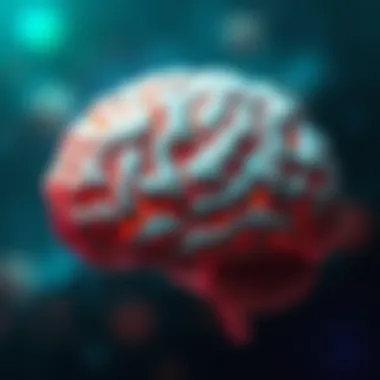
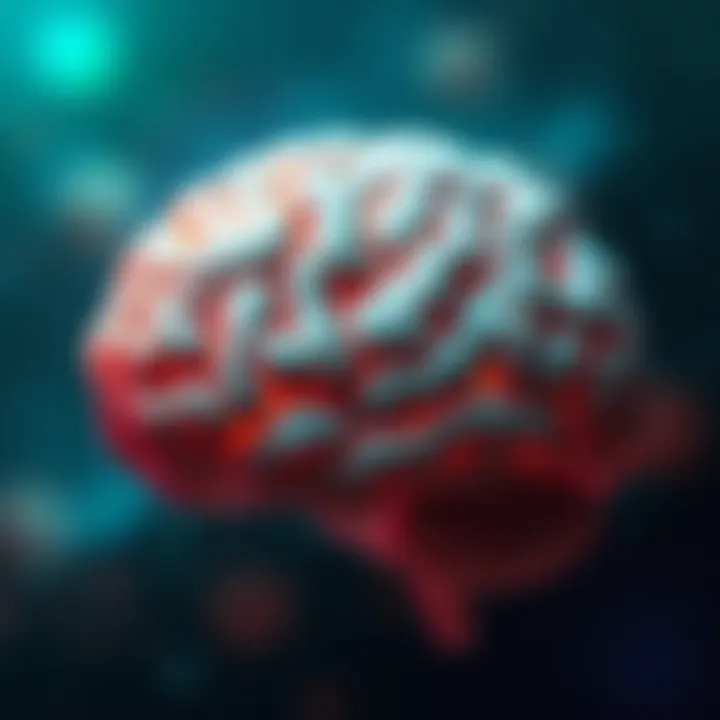
The neurobiology underlying memory function is intricate, involving various brain structures and processes. Key elements include the hippocampus and the prefrontal cortex, which play significant roles in memory formation and retrieval. Their health and functionality are often compromised in TBI, making it essential to study and comprehend their contributions.
The Role of Neurons
Neurons, the fundamental building blocks of the brain, are vital for memory processes. They communicate via synapses, forming complex networks that allow for the retrieval and encoding of memories. In cases of TBI, the integrity of these neurons can be disrupted, leading to impairments in memory functions. Notably, a distinctive characteristic of neurons is their ability to adapt and reorganize—known as neuroplasticity. This quality offers hope for recovery; if given the right environment and stimulus, neurons can form new connections, potentially restoring some memory capabilities after injury.
However, the challenge lies in the degree of damage sustained during the trauma. If neurons are significantly destroyed or if the surrounding brain tissue is compromised, recovery becomes much more complicated. The balance between encouraging neuroplasticity while preventing further damage is crucial in rehabilitation settings.
The Impact of Neurotransmitters
Neurotransmitters are chemicals that facilitate communication between neurons, playing critical roles in transmitting signals that pertain to memory processes. For instance, glutamate is pivotal for learning and memory, while gamma-aminobutyric acid (GABA) has inhibitory functions that regulate neuronal excitability. The balance between these neurotransmitters is essential for healthy cognitive function.
In the context of TBI, alterations in neurotransmitter levels can lead to significant memory impairments. Such changes can hinder the ability to form new memories or retrieve existing ones. A critical aspect of neurotransmitters is their interplay, where an imbalance can result in either excitotoxicity or impaired cognitive function. For some patients, pharmacological interventions targeting these neurotransmitter systems might offer pathways to improve memory function post-injury.
"Understanding the neurobiology of memory provides crucial insights into the rehabilitation processes that can aid recovery in TBI patients."
In closing, the study of memory, particularly how TBI impacts different types, neurobiological mechanisms, and underlying structures, forms a tapestry of knowledge. It sets the stage for better therapeutic approaches and fosters hope for those undergoing the turbulent journey of recovery.
Effects of TBI on Memory Function
The effects of Traumatic Brain Injury (TBI) on memory function are multifaceted and significant, warranting a focused examination within this article. Memory is foundational to our cognitive capabilities, shaping our learning, relationships, and daily interactions. When TBI impacts memory, it alters not just individual functionality but the overarching quality of life.
Understanding how TBI disrupts memory can illuminate the underlying processes of cognition and offer insights into rehabilitation. Memory impairments can fall into various categories, impacting short-term, long-term, and working memory. Each category presents its unique challenges for patients, caregivers, and healthcare practitioners. Therefore, comprehending these effects becomes necessary to guide effective interventions.
This section delves into the nuances of memory impairment post-TBI:
- Short-term memory impairment can hinder daily tasks and communication.
- Long-term memory complications can affect personal identity and the recall of significant life events.
- Working memory disruptions impact the ability to process information, affecting decision-making and problem-solving skills.
By dissecting these aspects, we hope to lay a solid foundation for further exploration of rehabilitation strategies and the complex interplay between memory and brain health.
Short-term Memory Impairment
Short-term memory is like a mental sticky note; it holds information temporarily, allowing individuals to navigate tasks and interactions. After a TBI, many report experiencing slips or complete gaps in their short-term memory. This could manifest as struggling to recall a conversation just moments after it has happened or forgetting where items were placed within seconds of setting them down.
This impairment can stem from various TBI-related causes including:
- Direct damage to the hippocampus, a critical area involved in memory formation.
- Dysfunction in the frontal lobe, which manages cognitive processes and decision-making.
- Changes in neurotransmitter function, leading to poor communication between neurons.
Consequently, these challenges can lead to frustration in both personal and professional settings. %% For instance, an individual may find it hard to follow conversations in meetings or manage simple errands like grocery shopping. These types of struggles not only impede daily functions but can also dramatically affect one’s self-esteem and social interactions.
Long-term Memory Complications
Long-term memory forms the backbone of our identity, containing our rich life experiences, relationships, and learned knowledge. Yet, following a TBI, many individuals grapple with significant difficulties associated with long-term memory. They might struggle to evoke cherished memories or recall facts learned earlier in life.
This form of memory dysfunction may be attributed to:
- Sustained damage to neural pathways that are critical for encoding and retrieval.
- Disruptive emotional impacts, as memories are often heavily tied to feelings.
- Chain reactions of neurobiological changes, making the retrieval of stored information increasingly difficult.
The implications are profound. Losing access to long-term memories can lead to a disconnect from one’s own identity. This can be especially challenging when friends and family mention shared experiences, reminiscences that suddenly feel foreign or distant. The emotional toll of long-term memory complications should not be underestimated.
Impact on Working Memory
Working memory serves as a mental workspace, enabling individuals to hold and manipulate information in real-time. After sustaining a TBI, many find their working memory compromised, making it difficult to juggle tasks or retain information while engaging in conversations.
Key issues include:
- Decreased attention span, which can hinder the ability to absorb new information.
- Poor task execution, as the individual may struggle to keep various threads of a task active in their mind.
- Frustration from not completing tasks as efficiently or effectively as before, leading to feelings of inadequacy.
Working memory is critical across numerous facets of daily life, from educational achievements to professional performance. The ability to process information swiftly can be the difference between success and failure in numerous contexts.
Understanding the impact of TBI on different aspects of memory prepares individuals, caregivers, and practitioners to approach rehabilitation with a tailored strategy that addresses each unique challenge.
Overall, the interplay between TBI and memory function reveals a complex landscape that requires careful navigation and informed strategies for recovery. Through dedicated assessment and progressive rehabilitation, there is hope for many to reclaim their cognitive abilities and restore their quality of life.
Neurological Mechanisms Behind Memory Disruption
Understanding the neurological mechanisms behind memory disruption following a traumatic brain injury (TBI) is crucial. This multidisciplinary exploration combines insights from neurology, psychology, and cognitive science, providing a comprehensive view of how TBIs can negatively affect memory functions. Memory is not a single entity; rather, it's a complex interplay of various cognitive processes that can be impeded by changes in brain structure and connectivity.
Memory disruption might arise from specific regions of the brain being damaged or altered due to injury. Furthermore, this disruption can also shed light on recovery pathways and inform rehabilitation efforts aimed at restoring cognitive function. Understanding these mechanisms helps clinicians devise targeted interventions that promote memory recovery.
Cerebral Structures Involved
The Hippocampus
The hippocampus is often referred to as the linchpin of memory processing. This small, seahorse-shaped structure located deep within the brain plays a pivotal role in forming new memories and in spatial navigation. Its unique architecture, characterized by tightly packed neuronal circuits, facilitates the intricate process of encoding information.
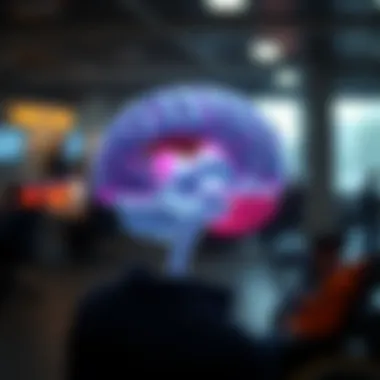
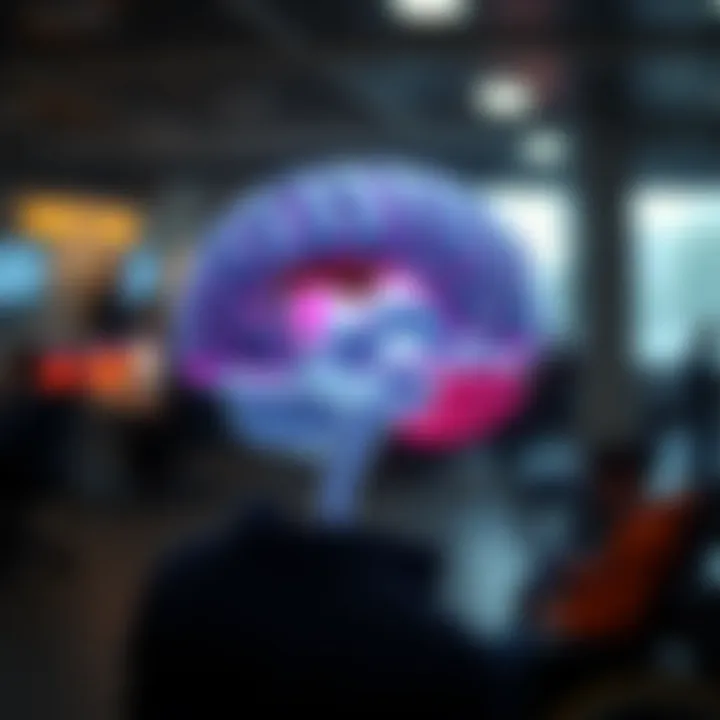
The key feature of the hippocampus is its ability to transform short-term memories into long-term storage. When a TBI occurs, this transformation can be severely impacted. Many studies point to the hippocampal atrophy observed in individuals post-injury, leading to significant impairments in their capacity to form new long-term memories. This makes tinkering with the hippocampus an invaluable approach in rehabilitation strategies, especially for rebuilding lasting memories after injury.
However, the disadvantage is that the hippocampus is particularly vulnerable to damage from various types of TBIs, including concussive blows. This should make us keenly aware of potential long-term memory issues faced by patients and the necessity of targeted neural rehabilitation.
The Prefrontal Cortex
Next on the list is the prefrontal cortex, often dubbed the brain's executive suite. It oversees decision-making, impulse control, and working memory—functions that are interwoven with our everyday lives. After a TBI, alteration of this area can lead to various cognitive deficits, particularly in tasks requiring understanding, foresight, and the management of complex memory tasks.
The prefrontal cortex is particularly compelling because it's known for its plasticity; that is, it has the ability to adapt and reorganize itself. This characteristic makes it a fertile ground for behavioral therapies targeting memory recovery. Yet, it carries its challenges. Damage to this area doesn't just affect cognitive functions but also emotional regulation, leading to the popular adage that one’s emotional state can greatly influence memory retention and retrieval.
Changes in Brain Connectivity
Following a TBI, the connectivity between different regions of the brain can be disrupted significantly. The communication pathways—essential for efficient memory processing—become tangled, leading to interruptions in how memories are formed and recalled. This phenomenon not only influences specific memory types but can extend to overall cognitive performance.
One key consideration is the role of white matter integrity in these connectivity changes. White matter consists of myelinated axons that facilitate rapid communication across different brain areas. Disruption in this white matter, often evidenced in neuroimaging studies, may correlate with diminished memory performance and cognitive decline.
In summary, the neurological mechanisms behind memory disruption paint a complex picture. From specific cerebral structures like the hippocampus and prefrontal cortex to broader changes in connectivity, each element plays a significant role. Understanding these facets allows researchers and clinicians to forge a path forward, leading to more effective rehabilitation approaches.
Psychological Impacts of TBI on Memory
The psychological consequences of traumatic brain injury (TBI) extend far beyond the physical realm, significantly influencing memory functions. Understanding the psychological impacts is crucial for researchers, healthcare professionals, and anyone supporting individuals with TBI. This segment delves into how these injuries can cultivate cognitive and emotional disturbances, as well as exacerbate conditions such as post-traumatic stress disorder (PTSD).
Almost every facet of life—be it work, social interactions, or daily tasks—can be affected by the psychological fallout from TBI. The intricate connection between memory and emotions cannot be overstated; when memory is compromised, it invariably affects a person's emotional wellbeing. Individuals may experience frustration, anxiety, or depression as they grapple with memory problems. This duality of cognitive impairment and emotional distress adds layers to recovery and rehabilitation, necessitating a comprehensive approach that includes psychological support alongside physical therapy.
Cognitive and Emotional Effects
Cognitive ramifications following TBI are significant. Memory deficits often manifest alongside other cognitive issues, such as impaired attention, difficulty concentrating, and diminished executive functions. Individuals may find themselves frequently misplacing items or struggling to recall recently learned information. This is not just an inconvenience; it can erode their sense of self.
On the emotional front, the psychological effects can be just as debilitating. Common emotional responses post-injury include:
- Frustration: Patients may find it difficult to engage in activities that were once straightforward, leading to a sense of helplessness.
- Anxiety: Concerns about memory loss and its implications can escalate, fostering an environment of worry.
- Depression: The cumulative effects of cognitive decline and emotional turmoil often lead to depression, significantly impacting quality of life.
These emotional responses are not trivial but are deeply intertwined with one's cognitive state. Simply put, when a person is unable to recall happy memories or experiences, it can lead to an overall disconnection from joy.
Post-Traumatic Stress Disorder and Memory
The relationship between post-traumatic stress disorder (PTSD) and memory is complex, particularly in the context of TBI. Many individuals who suffer from TBI also experience PTSD due to the trauma associated with the event. This overlap complicates memory function, often exacerbating the challenges related to both memory retention and recall.
PTSD often leads to intrusive memories or flashbacks, which can interfere with a person's ability to think about the present or conceptualize future events. On the flip side, individuals with TBI may struggle to form new memories or access existing ones, making it exceedingly challenging to navigate everyday life.
Key points about PTSD and memory:
- Fragmented Memories: Trauma can cause memories to become fragmented, making it hard to process the event coherently.
- Avoidance: Individuals may consciously or subconsciously avoid reminders that trigger memories of the traumatic event, further complicating their cognitive landscape.
- Emotional Numbness: While some may experience intense emotional responses, others can feel a disconnection from their emotions, a phenomenon often reported by those with PTSD.
Given this complexity, addressing both TBI effects and PTSD in rehabilitation is vital. Multidisciplinary strategies that incorporate psychological counseling, cognitive therapy, and memory retraining can empower individuals to reclaim their memories and qualities of life.
"Memory is the treasure-house of the mind wherein the monuments thereof are kept and preserved." – Thomas Fuller
By recognizing the psychological impacts of TBI on memory, we can pave the way for more effective treatment options and bolster support systems for those recovering from such profound injuries.
Clinical Assessment of Memory in TBI Patients
Assessing memory in individuals who have sustained a traumatic brain injury (TBI) is critical for understanding the extent of cognitive impairment, the appropriate rehabilitation strategies, and the overall prognosis. Memory assessment serves multiple purposes ranging from establishing a baseline for cognitive functioning to providing insights into the specific types of memory that may be affected. A comprehensive evaluation can shed light on cognitive deficits that are often overshadowed by more apparent physical injuries.
Memory assessment tools must be carefully chosen based on the individual’s needs. The interplay between memory, behavior, and emotional state can significantly affect rehabilitation outcomes. Therefore, clinicians must approach assessment from a multidisciplinary angle, combining neuropsychological evaluations with input from physical and occupational therapies. Keeping these considerations in mind can aid in developing a tailored treatment plan that addresses both cognitive and emotional recovery.
Diagnostic Tools and Techniques
Cognitive Tests
Cognitive tests are essential tools in the assessment of memory. They provide a structured way to evaluate various types of memory, such as short-term and working memory. A key characteristic of cognitive tests is their standardized nature; they have been designed and validated to measure cognitive functions in a reliably consistent manner.
One popular choice for TBI patients is the Wechsler Memory Scale. This test is favored because it offers intricate details about different memory aspects, such as verbal and visual memory. The unique feature of cognitive tests is that they can reveal specific deficits in memory functioning which might not be immediately noticeable in everyday situations.
However, it's worth noting that cognitive tests can have limitations. Test anxiety may affect a patient’s performance, leading to results that do not accurately reflect their true memory capabilities.
Neuroimaging Modalities
Neuroimaging modalities such as MRI and CT scans are increasingly making their footprint in clinical assessments of memory in TBI patients. These tools allow professionals to visualize structural and functional changes in the brain that could underlie memory impairments. They provide essential information regarding brain lesions, hemorrhages, or other anatomical abnormalities that could affect memory.
A key characteristic of neuroimaging modalities is their ability to deliver real-time insights into brain activity. For instance, functional MRI (fMRI) can show how brain regions activate during memory tasks, providing patterns that might indicate which areas of the brain are functioning abnormally.
While neuroimaging yields invaluable data, it comes with caveats. The high costs and availability of specialized equipment can limit access for many TBI patients, particularly in rural or underfunded healthcare facilities. Additionally, these procedures often involve time-consuming protocols, which can be challenging for patients dealing with cognitive decline.
Evaluating Memory Disorders


Evaluating memory disorders among TBI patients is a multifaceted endeavor that goes beyond mere assessment tools. Clinicians must also take into account the patient's context, including their emotional and social circumstances, which can skew cognitive performance.
A thorough evaluation entails interviews with the patient, family members, and caregivers, often revealing discrepancies in memory performance. Assessments should include longitudinal aspects to track changes over time, making it easier to adjust rehabilitation strategies. Ultimately, a holistic approach ensures that assessments are not merely numbers on a page but integral components in the recovery journey of TBI patients.
Rehabilitation and Memory Recovery Strategies
Rehabilitation and memory recovery following a traumatic brain injury (TBI) play a pivotal role in restoring an individual’s cognitive functions. The impact of TBI on memory can be profound and far-reaching, often affecting daily living and emotional well-being. Thus, effective rehabilitation strategies are essential not only for enhancing memory recovery but also for fostering overall life quality.
Cognitive Rehabilitation Techniques
Cognitive rehabilitation encompasses a variety of approaches aimed at improving cognitive function, particularly memory. This involves tailored interventions, such as:
- Memory Strategies: Techniques like chunking information or using mnemonic devices can be particularly useful. Chunking helps in organizing information into smaller, manageable parts, allowing individuals to remember large pieces of data more effectively.
- Retraining Programs: These programs focus on repetitive drills and exercises designed to reinforce memory pathways. They may include activities that stimulate recall, such as guided imagery or storytelling to enhance narrative memory.
- Attention Training: Often, focus is a crucial area of concern for those recovering from TBI. Specific exercises targeting attention can help individuals improve their ability to concentrate and, in turn, positively affect their memory retention.
Pharmacological Interventions
Medications might be utilized to support recovery processes in TBI patients. While not a substitute for rehabilitation strategies, pharmacological interventions can complement cognitive therapies. Some key considerations include:
- Cholinergic Agents: These medications can enhance the functioning of neurotransmitters, which play a critical role in memory and learning. For example, Donepezil (Aricept) is often prescribed for its effects on acetylcholine levels, potentially benefiting memory recovery.
- Antidepressants: Given the emotional toll of TBI, medications targeting mood may also contribute indirectly to cognitive recovery. By stabilizing mood, patients might find it easier to focus on memory exercises and rehabilitation activities.
- Cognitive Enhancers: Drugs like Modafinil have been explored for their potential in improving cognitive functions, including memory, after brain injuries. Research is still ongoing, and effectiveness can vary between individuals.
Multidisciplinary Approaches
A successful rehabilitation plan should embrace a multidisciplinary approach that encompasses various professionals, each contributing their expertise:
- Neuropsychologists: They assess cognitive function and can tailor individual rehabilitation plans according to the specific memory impairments observed.
- Occupational Therapists: Their role often involves helping individuals regain skills needed for daily activities, this includes using memory aids effectively.
- Speech and Language Therapists: These professionals work on communication and cognitive aspects of language, which can also overlap with memory recovery strategies.
- Family Involvement: Engaging family members in rehabilitation can enhance the emotional support system for TBI patients. Their participation can also facilitate the practice of cognitive strategies in real-life scenarios.
In essence, the rehabilitation process is not just about recovering lost skills but also about rebuilding confidence and independence in daily living.
Rehabilitation post-TBI is a complex journey that requires a well-rounded understanding of various factors at play. By combining cognitive techniques, medications, and comprehensive support from a variety of professionals, individuals stand a better chance at improving their memory and overall cognitive health.
Future Directions in Research
As we venture deeper into the complexities surrounding traumatic brain injury and memory function, the focus on future research directions becomes increasingly critical. New insights and methodologies are crucial for designing effective interventions and therapeutic approaches. Understanding how TBI affects memory offers the potential for developing strategies tailored to the unique needs of individuals suffering from its consequences. The interplay of innovative treatment modalities and rigorous research aids in comprehensively addressing memory dysfunctions associated with TBI.
Innovations in Treatment
One of the most promising avenues for future research lies in exploring innovations in treatment. Advances in technology and neuroscience have opened new doors for rehabilitation strategies aimed at memory recovery. For instance, researchers are investigating the use of neurofeedback as a therapeutic intervention. This technique allows individuals to self-regulate brain activity through real-time feedback, potentially enhancing memory processing abilities.
Additionally, digital therapeutic applications that incorporate cognitive training and gamified interventions are gaining traction. These tools leverage the principles of neuroplasticity, aiming to strengthen neural pathways often compromised by TBI. Furthermore, integrating virtual reality environments can simulate challenging memory tasks in a controlled, immersive setting. Such innovations not only engage patients but also allow for personalized therapy in a way traditional methods haven't excelled.
Innovations in pharmaceuticals are noteworthy as well. The exploration of neuroprotective agents, which can mitigate neurological damage after a traumatic event, shows promise. Studies focusing on drugs like Sildenafil have indicated that it may help promote recovery by enhancing blood flow and encouraging neurogenesis.
"Innovation in treatment is not merely about finding new drugs or therapies but about rethinking established paradigms and embracing technology to improve lives."
Longitudinal Studies on Memory Recovery
Another vital area for exploration is longitudinal studies on memory recovery. Research focused on tracking changes in memory over time can provide invaluable insights into the trajectory of recovery following a TBI. These studies allow researchers to identify patterns, understand the temporal dynamics of memory deficits, and recognize factors contributing to successful recovery.
For instance, longitudinal data can help determine the efficacy of various rehabilitation strategies over time. By observing memory improvements or declines among different demographic groups, researchers can tailor interventions more effectively. Factors such as age, gender, and pre-existing health conditions may heavily influence recovery pathways, and such distinctions become clearer through ongoing research. Furthermore, examining correlations between early intervention and long-term outcomes can sharpen our understanding of optimal treatment windows.
Incorporating patient-reported outcomes as part of these longitudinal studies enriches the data context, providing a more rounded view of the cognitive and emotional struggles individuals face. Ultimately, the deeper understanding gleaned from longitudinal studies can lead to more sophisticated models of care that address memory issues in a holistic manner.
Key components of future research in memory recovery must include:
- The effectiveness of personalized cognitive rehabilitation programs.
- The role of socio-environmental factors in supporting recovery.
- The impact of transcranial magnetic stimulation on memory pathways.
- Exploration into the combined effects of pharmacological and cognitive interventions.
By converging innovations in treatment with robust longitudinal studies, the future of memory recovery following TBI looks promising. Such endeavors not only underscore the serious nature of TBIs but also highlight our commitment to scientific exploration and patient-centered care.
Epilogue
Summary of Key Findings
- Types of Memory Affected:
- Neurological Mechanisms:
- Psychological Aspects:
- Assessment and Rehabilitation:
- Short-term Memory: TBI often disrupts an individual's ability to hold information temporarily, making even simple tasks challenging.
- Long-term Memory: The ability to store and retrieve information over extended periods can be significantly compromised.
- Working Memory: Daily activities that require processing and manipulating information suffer, affecting planning and execution.
- Injuries to cerebellar structures, particularly areas like the hippocampus and prefrontal cortex, are central to memory disruption. This highlights the importance of understanding brain anatomy in TBI scenarios.
- Emotional repercussions, including anxiety and depression, often arise post-TBI, which can further impede memory processes.
- Clinical assessments remain essential for understanding the extent of memory impairment. Techniques ranging from cognitive rehabilitation to pharmacological interventions show promise in aiding recovery.
"Trauma affects more than the brain—it shapes memories that define us."
Implications for Future Research and Practice
A deep dive into memory's complexities post-TBI not only calls for further research but also has profound implications for treatment methodologies.
- Innovate Treatments: We must continue to seek better cognitive therapy methods and adapt existing ones to cultivate memory recovery in TBI survivors.
- Long-term Studies: Additional longitudinal research is paramount to explore how memory evolves after TBI, providing insights into time-related changes and recovery pathways.
- Integration of Practice: It’s essential to promote interdisciplinary approaches where neurologists, psychologists, and rehabilitation specialists collaborate. Such teamwork can better address the multifaceted effects of TBI.
- Public Education: By raising awareness about TBI and memory impairment, we can foster understanding that helps couples, families, and communities support survivors effectively.
In summary, diving into memory functions affected by TBI enriches our understanding and enhances approaches to treatment, ensuring that individuals on their path to recovery receive the most effective care possible.







